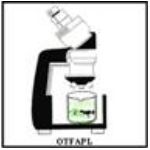AGLS 6502 Lecture 14.3 - Wildlife Farming
14.11 The Evolution of Wildlife Farming in Trinidad & Tobago
Hislop (undated), defined wildlife farming as the rearing or keeping of (game) animals for the purpose of captive breeding. In Trinidad & Tobago these game animals have included the following :
- agouti (Dasyprostya aguti now D.leporina),
- alligator / spectacled caiman (Caiman sclerops )
- cocrico (Ortalis ruficauda ),
- deer/ red forest brocket deer(Mazama americana ),
- iguana (Iguana iguana ),
- lappe / spotted paca (Agouti paca ),
- manicou/ black eared opossum (Didelphis marsupialis insularis ),
- morocoy (Geochelene spp ),
- tattoo/ nine banded armadillo (Dasypus novemcinctus),
- wild hog/ quenk/ collared peccary ( Tayassu tajacu ).
Persons who have kept and successfully reared the species mentioned above or any other non-domestic species, may be considered a "Wildlife Farmer." There appears to be two categories of wildlife farmers, the hobbyist and the backyard farmer (Hislop, undated, b; Hislop,1987). James (1988) reported that captive rearing of wildlife has been practiced in many rural communities in Trinidad & Tobago for several years. This was carried out as an underground operation because of the fear of prosecution.
Asibey (1986) suggested that there was no legal prohibition against the keeping of game animals in captivity. However, wildlife farmers should not dispose or trade their animals during the closed hunting season (i.e. April 1st. to September 30th. annually). James (1988) indicated that international conservation and international development organisations have begun to lend support to captive-breeding of wildlife as a basis for food production.
These included the International Union of Nature and Natural Resources; the Smithsonian Institute; and United Nations Food and Agriculture Organisation. Recently several governments, including that of the Republic of Trinidad & Tobago have become aware of the importance of wildlife farming as a form of economic activity to be exploited or explored by rural communities.
Official sanctioning and encouragement of wildlife farming has led to the discovery of a large pool of active farms. These farms were run mainly as hobby units for recreation and after retirement, or as a peasant/ subsistence type operation to supplement incomes.
With Dr. Asibey's encouraging initiatives, co-operation among existing farmers was fostered through the formation, in 1984, of the Wildlife Breeders and Farmers Association. This association provided the ideal avenue for co-operation between the Ministry of Food Production Lands and Marine Resources and wildlife farmers, which continued to flourish to the present. The support of the Wildlife Section of the Forestry Division in the Ministry of Agriculture under the direction of Dr. Carol James has been encouraging.
14.12 The role of wildlife farming
An examination of the literature suggested that wildlife farming has a multipurpose function in society. The roles of wildlife farming can be categorized into the following:
- production of food and commercial products;
- economic opportunities;
- rural development;
- recreation and aesthetics;
- religious activities;
- biological pest control;
- integrated farming;
- education; and
- conservation benefits.
14.13 Threats to Wildlife and Wildlife Farming
Threats to wildlife in general with specific reference to the neo-tropics [Caribbean, Central and South America]. Most wildlife in the New World [Neo-Tropics] are being threatened or endangered for the following reasons: Human/ Biotic Factors, Pollution and Micro-Climatic changes.
1] Human/Biotic Factors
As human populations increase so does the need for additional housing settlements. "Towns and suburbs gradually encroach on the natural forests and bush-land areas thereby destroying the natural habitat of the wild animals." The forested areas where these animals make their home is not only threatened by the clearing of land for the construction of housing, but also from the building of motorways and access roads which fragments their natural habitat.
In many small island states the aim to become self-sufficient in food has led to more land being devoted to agriculture. New areas are being rapidly developed in an attempt to supply these countries with food. Additionally, the removal of timber from the forests and forest fires has created less obstacles for hunters as well as habitat destruction.
Other major causes for the decline in the number of Agouti are over-hunting and indiscriminate killing. Some hunters disregard the illegality of hunting in the closed season and kill animals that may be potentially fertile or pregnant. This is compounded by the willingness of members of the society to support the trade.
2] Pollution
When the human population disposes of refuse using unsanitary or environmentally hazardous methods, there are negative effects on preservation of all wild animals.
3] Micro-Climatic Changes
Micro-climatic changes due to natural or manmade involvement have impacted negatively on the survival of the wildlife. It has lessened the available land space by creating longer rainy seasons and increasing the daily temperatures. This can lead to flooding in forested areas and the destruction of flora and fauna.
References:
R. Holmes, "Our Duties to Endangered Species", Conservation and Values. (Colorado: Colorado University Press, 1998) 57.
